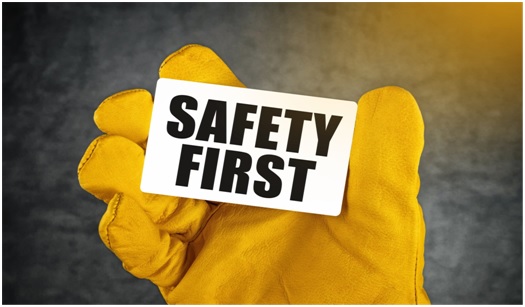Environmental, Health, and Safety (EHS) have emerged as critical issues in today’s society, affecting both persons and enterprises. An environment that is safer, healthier, and more productive can be achieved through EHS training, which is essential given the increasing focus on workplace safety, employee well-being, and environmental sustainability.
This article explores the many facets of the significance of Environmental Health and Safety (EHS) training, including how it affects legal compliance, risk management, employee welfare, environmental stewardship, and overall productivity.
Safety First
The foundation of a productive workplace is safety. Workers should feel safe in their surroundings and be able to recognize any risks and take appropriate action to reduce them. An essential component of fostering a culture that prioritizes safety is EHS training.

Hazard Identification and Mitigation: EHS training equips staff members with the necessary abilities to identify any risks. It gives them the ability to act quickly and decisively to stop mishaps and injuries, which makes the workplace a safer environment.
Accident Prevention: Workplace mishaps can have serious repercussions, such as fatalities, serious injuries, and financial strain on both parties. Preventive measures are emphasized in EHS training, which lowers the probability of accidents.
Cultivating a Safety Culture: One of the most important aspects of developing a safety culture in a business is providing EHS training. It increases workers understanding of their safety-related obligations and promotes preventative safety actions. Everyone works in a more secure environment as a result of this cultural transformation.
Legal Compliance
In many nations, strict laws control occupational safety, health, and environmental protection. Serious legal repercussions, including as fines and legal actions, may arise from noncompliance. Organizations comply with these regulations thanks to EHS training.

Meeting Regulatory Requirements: Organizations are guaranteed to be completely compliant with all applicable regulatory standards through EHS training. It includes things like managing dangerous products, encouraging ergonomics at work, and creating efficient emergency response protocols.
Avoiding Legal Consequences: Failure to adhere to EHS regulations may result in expensive legal troubles and harm to an organization’s standing. By reducing the likelihood of non-compliance, EHS training protects businesses from fines.
Demonstrating a Commitment to Safety:Companies who make a significant investment in thorough EHS training not only guarantee legal compliance but also show a strong dedication to environmental responsibility and safety. Anorganization’s reputation can be improved and beneficial connections with stakeholders can be fostered by this commitment.
Risk Reduction
EHS training actively attempts to reduce hazards in addition to focusing on compliance. The likelihood of incidents and accidents at work can be greatly decreased with thorough training.

Effective Risk Management: EHS training programs provide a strong emphasis on risk management techniques, instructing staff members on how to recognize and reduce hazards. Organizations lower the possibility of mishaps or environmental problems by mitigating risks.
Lower Insurance Costs:Reductions in workplace accidents safeguard workers and help companies monetarily. Lower insurance prices result from fewer accidents, which can save a significant amount of money over time.
Fostering a Safer Work Environment:Increased productivity and staff morale are results of a safer workplace. Less incidents and accidents mean less disruptions for workers, which makes the workplace more stable and productive.
Employee Well-being
Employee well-being is greatly enhanced with EHS training. Comprehensive training makes workers feel more comfortable in their positions, which raises job satisfaction and lowers turnover.

Enhanced Job Satisfaction: Workers who feel secure in their health and safety at work are more likely to report feeling more satisfied with their jobs. They show more dedication to their work and feel that their company values them.
Reduced Turnover Rates: Organizations may incur large costs as a result of high staff turnover. EHS training lowers attrition rates and saves money on hiring and training costs by fostering a safer and more fulfilling work environment.
Empowering Employees: Employees who receive EHS training are better able to take responsibility for their own health and safety. Employee morale improves as a result of this empowerment since they feel more in control of their work.
Environmental Stewardship
Environmental stewardship, in an era of increasing environmental consciousness, is an essential component of corporate social responsibility. The emphasis on appropriate environmental practices in EHS training helps with this.

Minimizing Ecological Footprint: Managing Resources Responsibly, Reducing Waste, and Preventing Pollution: EHS training informs staff on how to manage their resources responsibly, reduce waste, and prevent pollution. As a result, an organization has a smaller negative environmental impact.
Demonstrating Commitment to Sustainability: Organizations can show their commitment to sustainability by supporting ethical environmental practices and investing in EHS training. This dedication can boost their brand and draw in investors and environmentally conscientious customers.
Compliance with Environmental Regulations: By ensuring that firms follow environmental standards, EHS training helps them stay out of trouble and save money on fines and penalties for non-compliance. To keep a clean environmental record, compliance with this requirement is crucial.
Improved Productivity
EHS training directly affects productivity in addition to safety and compliance. Employees with proper training operate more confidently and efficiently, which boosts output overall.

Fewer Disruptions: Less incidences and accidents at work result in fewer disruptions. Workers are able to focus on their work, which increases productivity.
Enhanced Employee Confidence: Employees who have received quality training are more assured in their skills, which leads to more productive and efficient work. Additionally, this self-assurance can inspire creativity and problem-solving.
Higher Job Satisfaction: Workers who perceive a safe and respected work environment typically report increased job satisfaction. Productivity and job satisfaction are closely related since happy workers are more inclined to give their best efforts.
Effective training is interactive
- A trainer discusses direct observation of the behaviour of participants or some specific facts.
- A trainer has openness; he should not rush to any judgment or criticism.
- A trainer maintains collaborative communication with the participants.
- A trainer questions frequently and determines the problem – sees to it whether an employee understands or not.
- A trainer listens and shows that an employee has correctly understood the subject matter or not.
- A trainer provides affirmation of the employee’s feelings and their point of view
- A trainer provides clarification and helps to identify the true nature of the problem
- A trainer uses collaborative problem-solving techniques
- A trainer motivates the participants to learn the subjects.
- A trainer does recognise the improvements and appreciates the participants during trainings.
- A trainer responds to a particular situation and individual.
- A trainer tries to praise participants, does correction, encourages and becomes helpful.
- A trainer optimizes the advantage of personal attention.
- A trainer takes specific care about the person and about the details of how work is done.
- A trainer doesn’t describe or lecture, but explains, exhibit with examples and case study.
- A trainer ensures that participants understand by questioning and requesting the employee to demonstrate back.
Conclusion
In conclusion, EHS training is a priceless resource that helps create a workplace that is safer, more efficient, and environmentally conscious. It increases overall productivity, fosters a culture of safety, guarantees legal compliance, reduces risks, improves employee well-being, and encourages environmental stewardship. Prioritizing EHS training helps organizations invest in a better, more sustainable future in addition to meeting their legal requirements.



